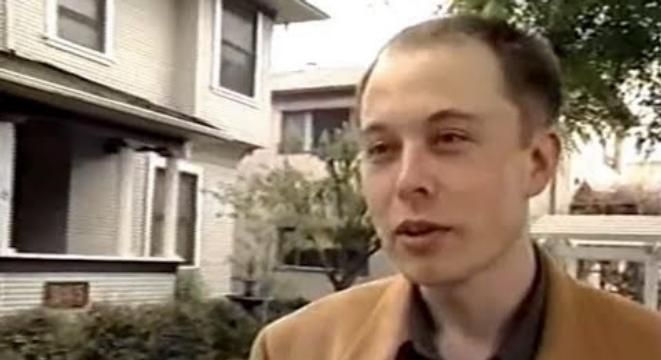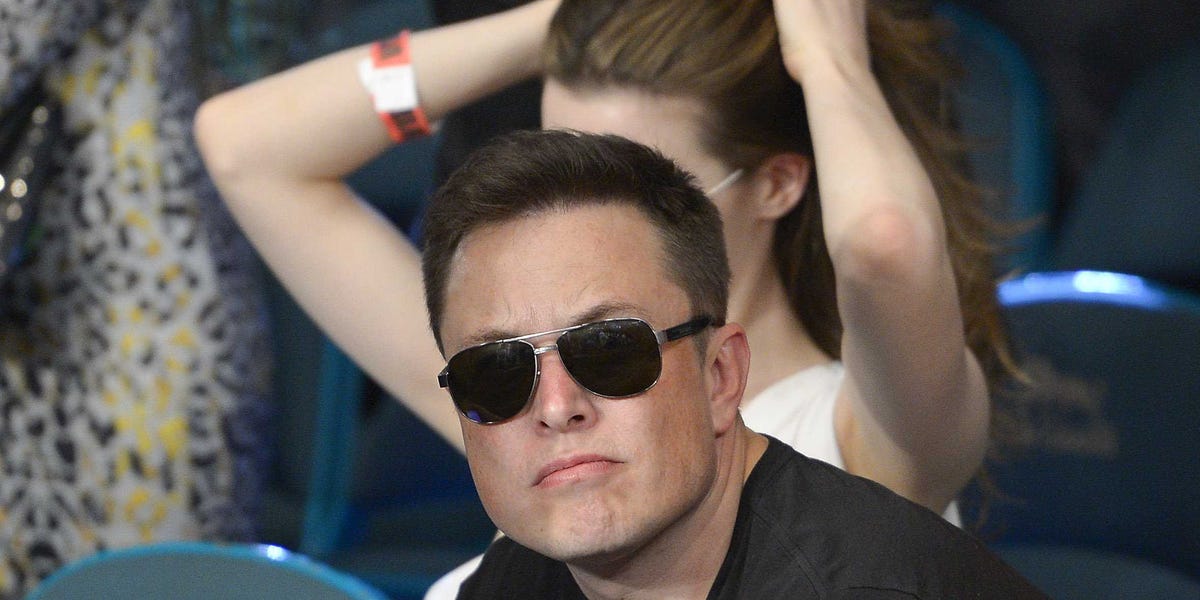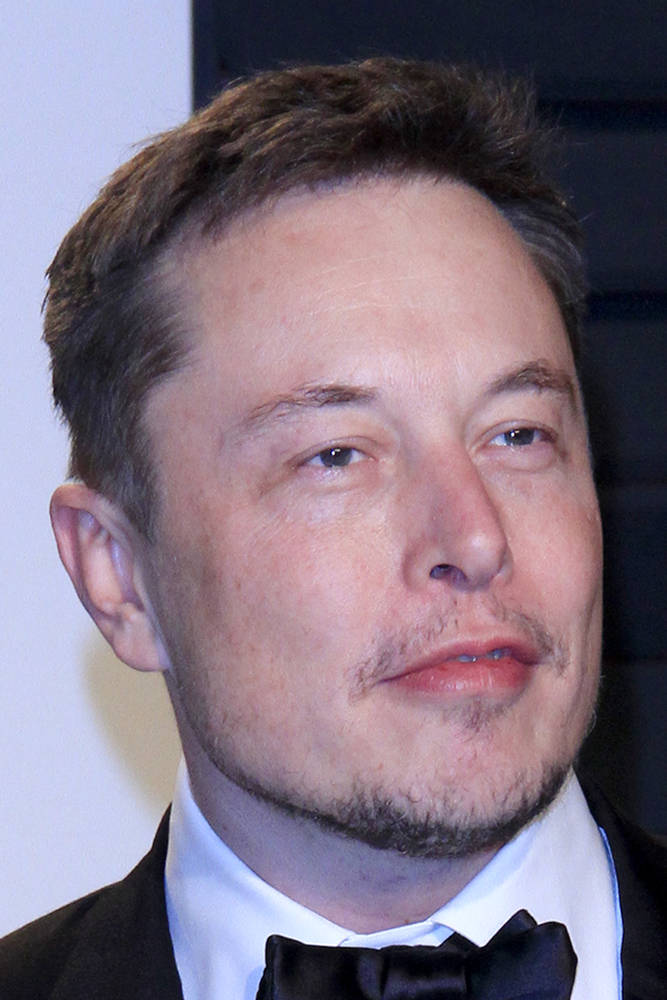While there are plenty of milestones to anticipate as you grow older – retirement, becoming a parent, becoming a _grand_parent – it's safe to say that no one looks forward to losing their hair.
It’s also something that men from all walks of life have in common—whether you're a middle-class father or a multi-billion dollar business magnate like Tesla CEO Elon Musk.
Musk, who now boasts a full head of hair, once had a clear receding hairline and balding scalp. The before and after photos tell the whole story.
Thanks to an undeniable hair transformation though, you might never guess that Elon Musk was once clearly balding. As a result, countless men have looked to Elon Musk as a real-life example of someone who successfully overcame thinning and balding.
But the question remains: how did Elon get that hair back?
Here's everything you need to know about the mystery of Elon Musk's hair.
What Is Male Pattern Baldness?
Male pattern baldness, known medically as androgenic alopecia, is the most common type of hair loss affecting men. The majority of men will experience some form of male pattern baldness by the time they reach the age of 50. However, some men begin to show symptoms much earlier, as was the case with Elon Musk.
In the mid-90s, Musk was in his late twenties, and he was already showing signs of male pattern baldness. He was primarily losing hair at the front part of his head and had a visibly receding hairline. In addition, the hair that he still had on the top of his head was beginning to thin noticeably.


The image above shows Musk (and his former head of hair) with PayPal co-founder Peter Thiel around the time that Musk was CEO of PayPal.
Because Musk started to lose his hair at a young age, we can speculate that it was likely a result of genetics, a family history of baldness probably diagnosed as androgenic alopecia.
Genetics are a key factor in the onset of male pattern baldness. When a man has inherited particular genetic traits (which still aren’t perfectly understood) his hair follicles shrink at a faster rate than normal, largely due to the effects of androgenic hormones. With time, these hormones — testosterone and dihydrotestosterone – act on hair follicles, causing them to produce shorter and thinner strands of hair.
Eventually, hair follicles can stop growing new hair entirely.
How the Transformation Happened
So how did Elon Musk grow his hair back?


No one can deny that Musk's hairline and scalp aren't what they once were...for the better.
Musk now sports a full head of hair, despite having clearly dealt with what may be male pattern baldness in the past.
Because inherited baldness does not simply improve on its own, Musk likely took steps to improve his condition.
While we don't know exactly which option (or combination of options) transformed Musks’ hairline, there are several possibilities that could have made a difference.
Here's how Musk might have gotten his hair back.
1. Hair Transplant
Hair transplants have come a long way in recent years. What used to be quite an obvious substitution for natural hair – remember those pencil-eraser-sized dots on men’s scalps? — is now a much more advanced invention. Hair transplants are a great option for men who are losing their hair and want to restore it quickly and effectively.
Hair transplants are created using a sample of the donor's real hair from somewhere else on their body. The strands of hair and follicles are then transferred to sparse areas of the scalp, namely the front and top of the head. Surgeons normally sample hair from the back and sides of the head, which typically aren't affected by baldness as quickly for many men as the top and front.
The transfer takes place with help from fine, high-tech instruments.
Many men opt for hair transplants because they create natural hair that can continue to grow. Because hair is taken from the person's head, it fits in seamlessly with the rest of their hair, creating a uniform appearance.
This is one of the key reasons why an Elon Musk hair transplant is a likely scenario. Musk’s hair clearly rebounded from what was quite sparse a decade ago.
2. Hair Loss Medications
If Musk never opted for a transplant, a possible alternative is that he used one of a few FDA-approved hair loss medications. Minoxidil and finasteride are both medications approved by the FDA and demonstrated to help grow hair and improve density in multiple clinical trials. They've both been around for decades.
Finasteride is an oral medication taken once daily to stop the production of dihydrotestosterone, the hormone largely responsible for hair loss and thinning in men with androgenic alopecia. It can reduce circulating DHT by over 60%, which has a profound effect in helping hair bounce back more densely and maintain the existing hairs. Finasteride is also available onlyby prescription.
Minoxidil is a topical medication that, when applied daily, can also help catalyze hair growth, slow hair loss, and thicken the density of hair. It’s proven to work in millions of men and women. Minoxidil is available in most pharmacies and through providers like Shapiro MD.
While these are trusted methods for many men, it’s unlikely that Musk used these medications alone. Hair loss medications like these do not tend to restore hair to the level of thickness that Musk achieved, and they typically don't rescue hair from the sparseness that he once had.
Another important point to keep in mind is that these medications take months to deliver results. If your goal is to get the new and improved version of Elon Musk's hairline, don't expect to see a difference in a matter of hours or days.
With consistency, however, both can transform men's hair.
__Considering the dramatic changes seen in Elon's hair before and after pictures, it's probably safe to say that he went with a hair transplant. __
Which Hair Transplant Did Musk Use?
If you’re dealing with hair loss and wondering how Elon got that hair, you’ve probably done a little research on hair loss and restoration already.
There are two primary types of hair transplants: a Follicular Unit Transplantation (FUT) and a Follicular Unit Extraction (FUE).
Both methods follow the same process of transferring a sample of hair from the back and sides of the head to the front and top of the head. When done properly, the result is a full, healthy head of hair that looks as natural as if it actually grew that way.
That said, there are a few differences between these two methods.
For example, men who undergo an FUT are often left with a visible scar on the back of their head. This is because the surgeon removes a strip of healthy hair from the back of a man's head and transplants it to the areas where balding is present. The scar is often the same shape and size as the strip of hair that was removed.
An FUE follows a different process. There is no strip of hair removed at all during an FUE procedure. Instead, the surgeon works with individual hair follicles before transferring them to balding areas of the head. This is a much more advanced method than an FUT, as it doesn't leave any visible scars and is more seamless when done well.
Because FUEs were not as common when Elon Musk likely got a hair transplant years ago, it's unlikely that he chose this method, and an FUT is probably more likely.
These days, however, if you have the means to get an FUE, this is undoubtedly the more effective method for hair restoration.
Get Your Hair Back Like Musk?
Balding Elon Musk is a thing of the past.
It's difficult to ignore those before and after photos of Elon’s hair, especially if you’re dealing with hair loss yourself. Between his wealth and that restored hair, Musk may be a compelling role model. If you've been inspired by Musk's transformation, you might be considering your options. And it’s true: a hair transplant is one of the fastest and most reliable methods for addressing existing hair loss.
But that’s not the only path to thicker hair. Hair transplants provide a rapid path to thicker hair, but they have their issues: namely expense and finding the right, qualified provider.
Depending on the severity of your hair loss, minoxidil and/or finasteride may be a better option. For men who aren’t totally thinned out, these medications are effective at slowing hair loss and even helping to regrow new hair. They work for the majority of guys who try them, and when combined can produce even better results than when used alone.
Talk to your doctor if you aren't sure what’s the right choice for you. A dermatologist can help you rule out other possible causes of male pattern baldness, such as stress or an underlying medical condition.




